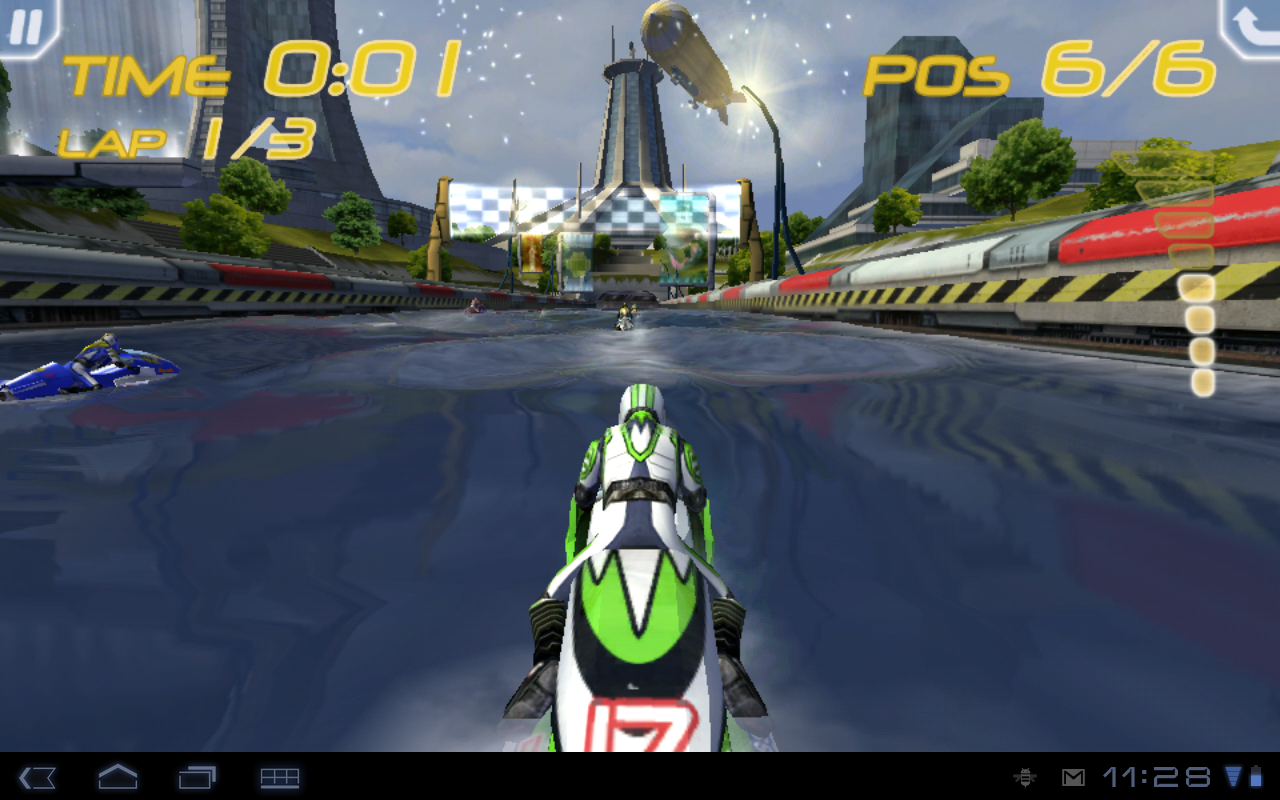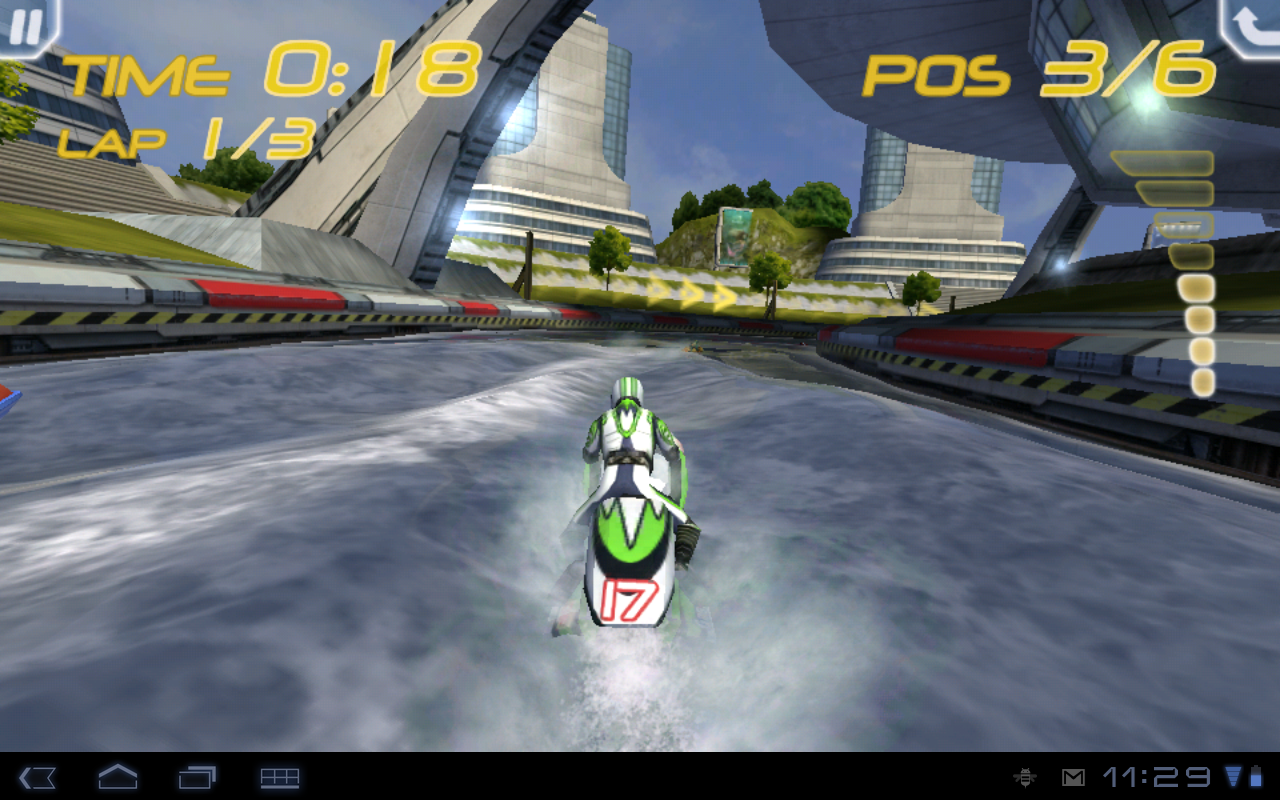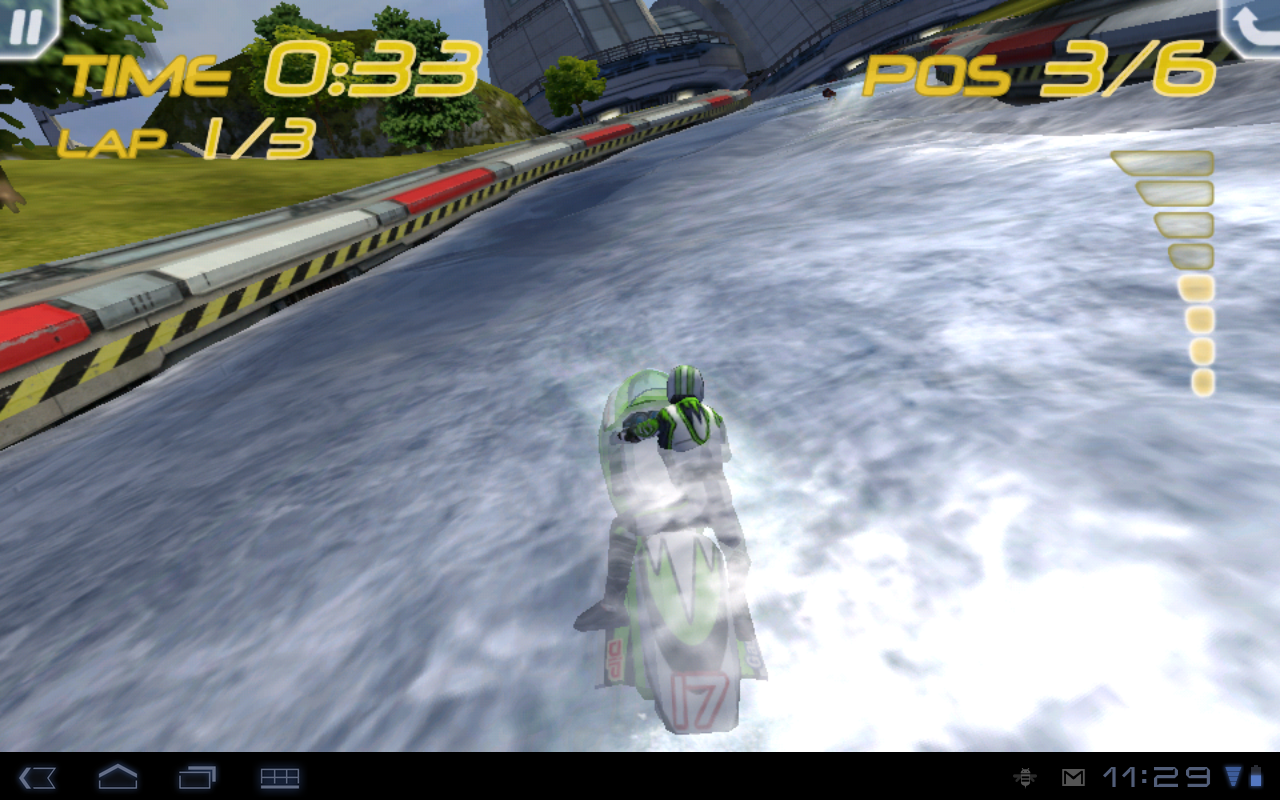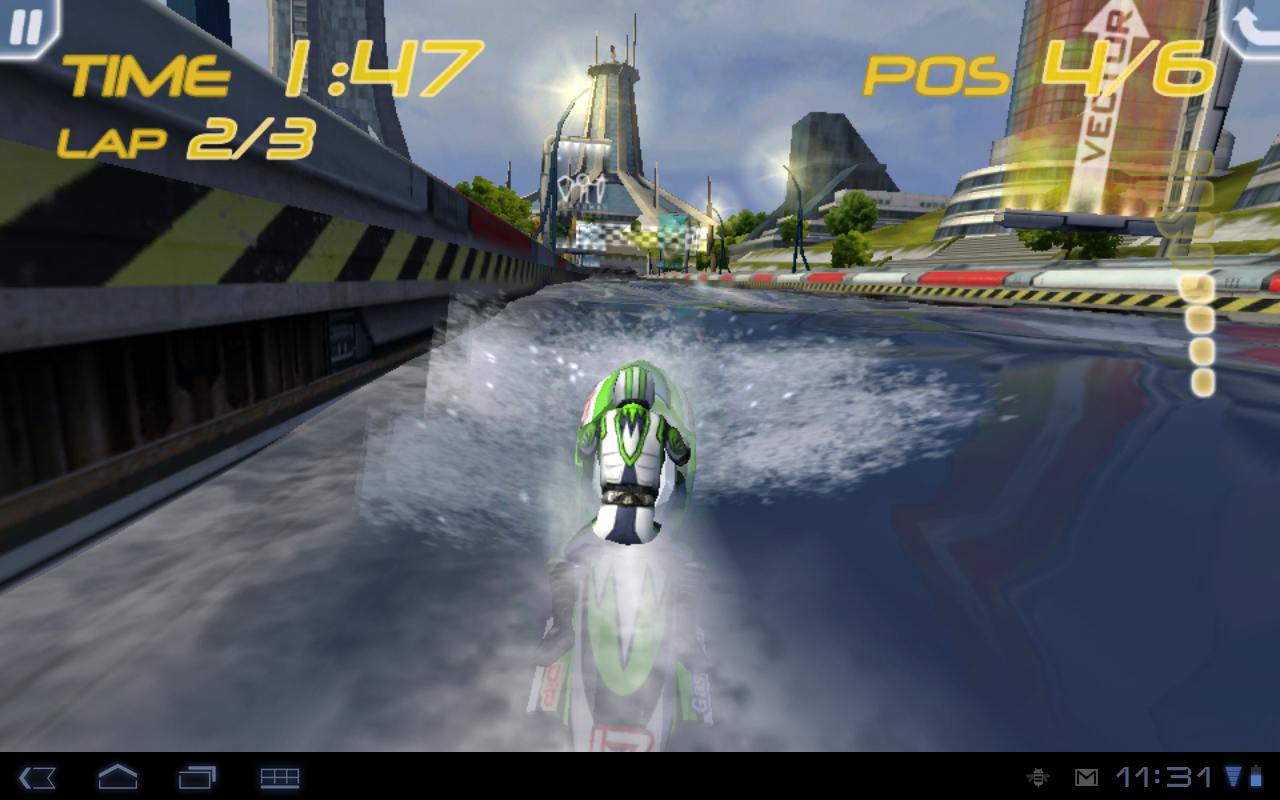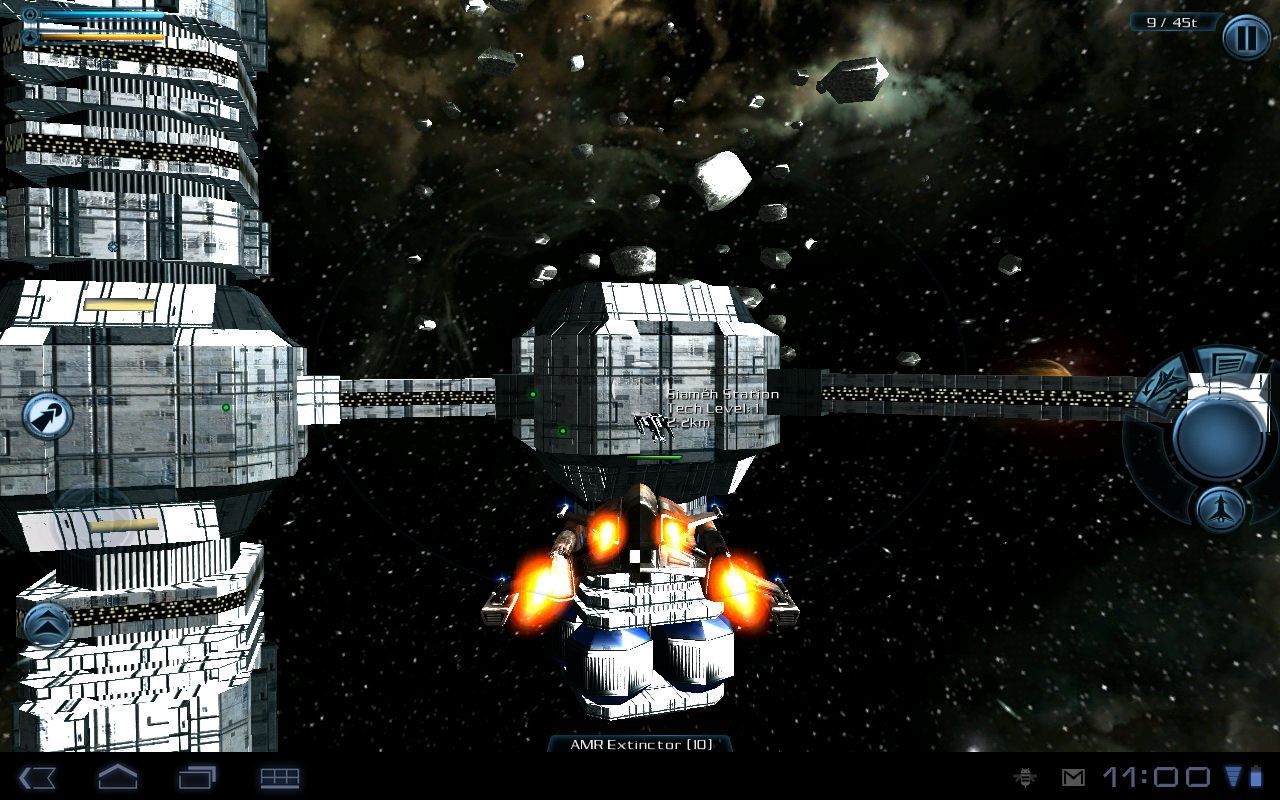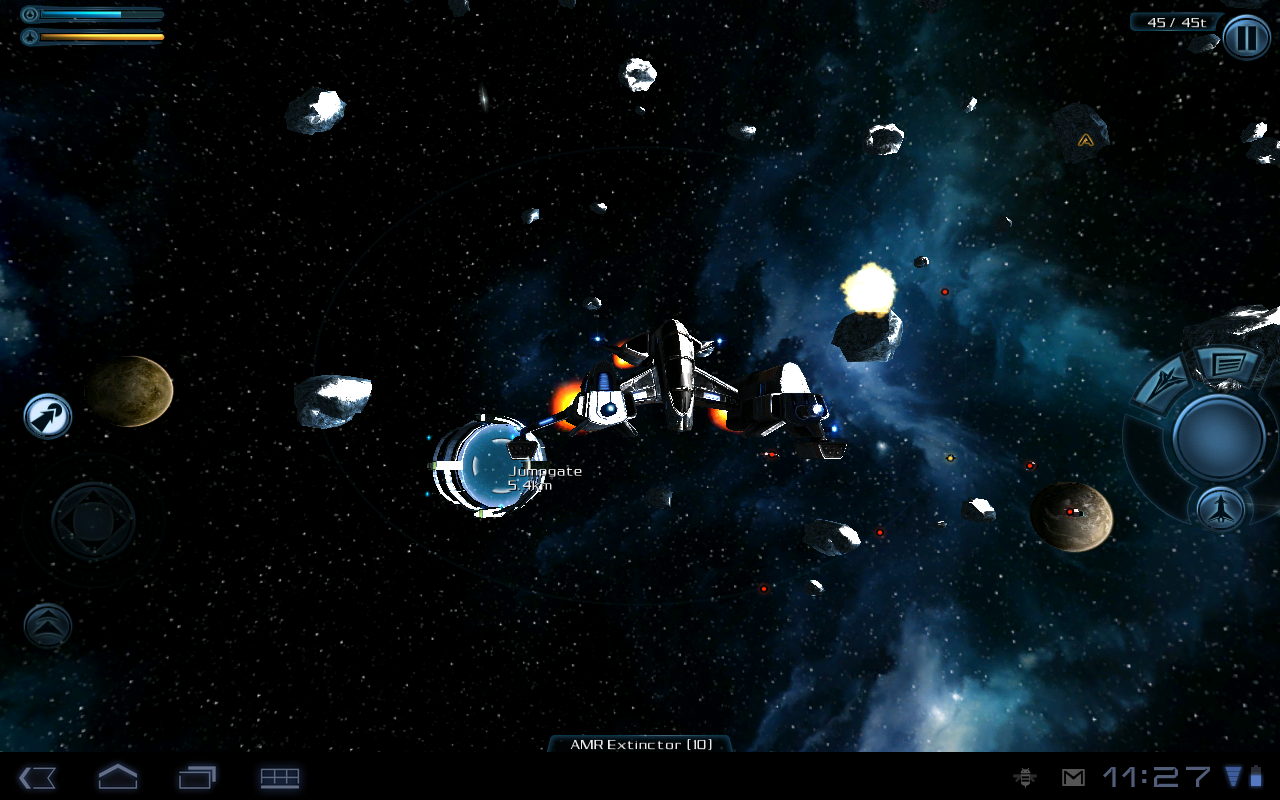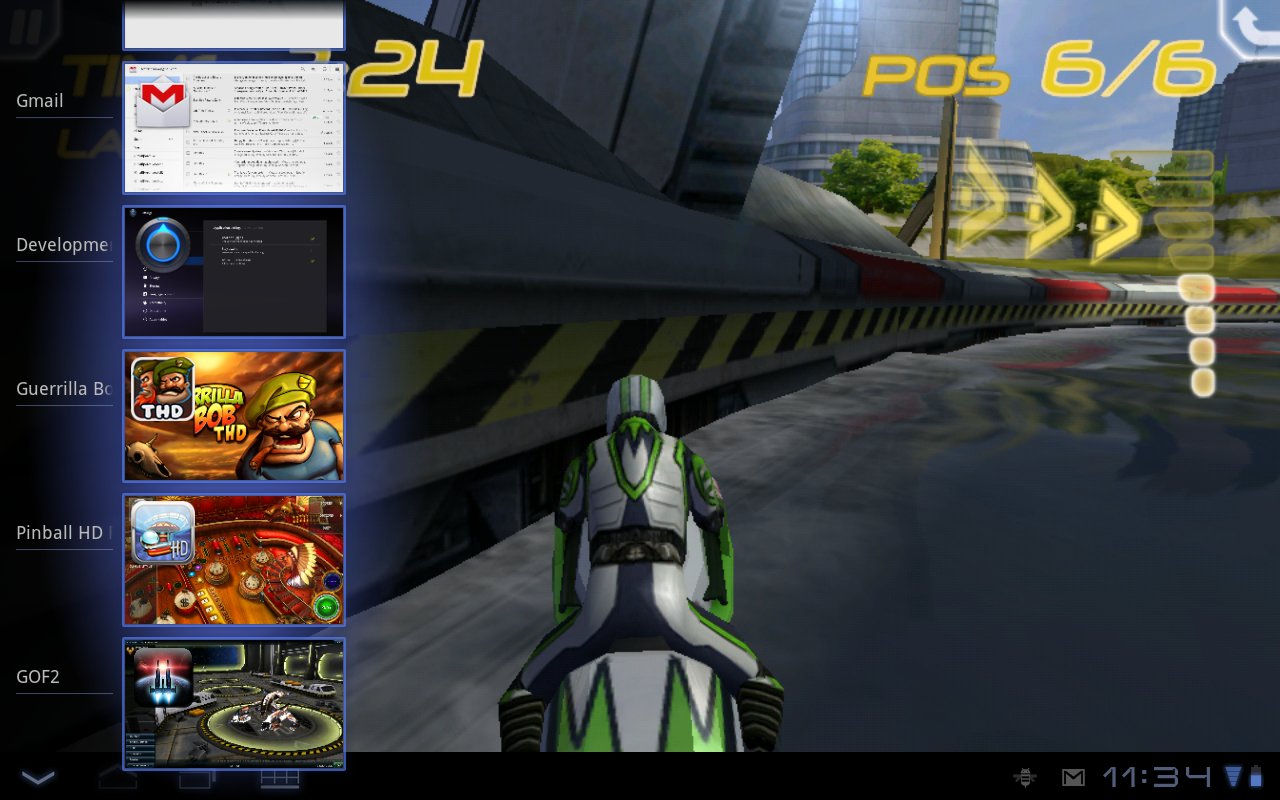Motorola Xoom: The First Android 3.1 (Honeycomb) Tablet
Honeycomb And Tegra 2: Gaming Spotlight
There are several cross-platform games that run on iOS and Honeycomb, but none of them push the boundaries of 3D graphics. Let's be honest, it doesn't take a lot of GPU horsepower to run Angry Birds. So, this makes a real-world graphics comparison between the iPad 2 and other tablets difficult. Instead, you have to look at games specific to each platform.
Apple definitely has a head start in the tablet-based gaming market. Infinity Blade and Real Racing 2 HD have been around for some time, and they help illustrate the graphics potential of the iPad 2's dual-core SGX 543.
Android-oriented developers are slower to develop similar games for two main reasons. First, we've seen a lack of appropriate GPU horsepower in many older Android-based products. Second, fewer developers are interested in porting existing code. Nvidia is trying to help close this gap for Google, as it's leveraging substantial developer connections to help showcase the graphics performance of Tegra 2-based tablets like Xoom. Of the games that Nvidia has shown to us, Riptide seems to be the only game that's currently worth mentioning. Interestingly, it's created by Vector Unit, the developers of Xbox 360 hit Hydro Thunder Hurricane.
Overall, Riptide is an impressive game. Game play is smooth, and the water effects details are pretty good, considering the limited form factor and thermal constraints. But this is a first-generation game on a first-generation Android tablet, so it's more comparable to what you'd get from an iPad, and not an iPad 2-optimized title.
If you're a prospective tablet buyer, you have a choice between a first-generation Android tablet like the Xoom, and a second-generation iPad, which clearly enjoys a more potent graphics core capable of features like AA. We'll have to wait and see if the ISV community is able to take advantage of Tegra 2 the same way.
There are several upcoming Android-based games that we'd recommend keeping an eye on. Galaxy of Fire 2 is no longer limited to Sony Ericsson's Xperia; Nvidia handed us a beta copy that works on the Xoom. The build to which we have access is still a bit buggy, but the results are good enough to impress us. The Xoom's larger screen offers a more visually-stunning experience than the Xperia, and this this game has a lot of potential if Fishlabs focuses on increasing graphics detail. It's oddly reminiscent of Nexus: The Jupiter Incident, which was a hit with RTT gamers looking for a sci-fi theme.
It's naturally important that Nvidia and Google help developers create games, but that's only half of the battle. It's equally critical that the games run smoothly. While Nvidia continues to develop better hardware, Google can help by tweaking Android a bit for a smoother UI experience.
Get Tom's Hardware's best news and in-depth reviews, straight to your inbox.
Moving between multiple games with the switcher is noticeably slower than other apps. The transition between games often exceeds one or two seconds. I'm not sure if this is the result of keeping certain background process alive and others frozen, but the multitasking switcher is supposed to offer seamless and instant app navigation. It might seem logical that opening multiple games on a tablet would be performance-inhibiting. However, I don't have the same problem with other applications in Honeycomb or with games on the iPad.
Current page: Honeycomb And Tegra 2: Gaming Spotlight
Prev Page Tegra 2: Nvidia Goes Mobile Next Page Display Quality: Color Gamut-
dragonsqrrl Very impressive review, especially the display quality page. A lot of in-depth information.Reply -
joytech22 Excellent! Covered everything I was interested in when comparing the iPad 2 to the Xoom.Reply -
tramit Excellent review. I also agree that the excuse of Android coming later in the game does not mean it cannot have the same growth in apps in the same alotted time frame that it was released.Reply
I personally feel that the iPad is a better device for gaming just by going through the app store and being able to find games ranging from Monopoly to FF3 and Infinity Blade. I have a Nexus S right now and the list of attractive games is not as long.
I like having both devices however. I plan to stay the course with continuing to purchase Android Nexus phones and having Apple supply me with their iPad. I get to enjoy the best of both worlds and not narrow my enjoyment of tech like most Droid and Apple fanboys. -
Maziar Excellent review.Reply
I'm impressed with the honeycomb but I think it has 2 major drawbacks
1)UI is somehow laggy and not 100% smooth
2)Lack of apps.
If these 2 issues get fixed,then we're going to see a better competition -
fstrthnu A little late, but very good quality review. Very nice to see custom benchmarks, it really shows you guys put in the effort here.Reply
I'd probably go for a Samsung Galaxy Tab 10.1, but that's just me. -
Seems HD video playback was not tested. Nice to have a HDMI option, but not really useful if most HD movies cannot play smoothly as is the case with the XOOM.Reply
Also, and probably related to the slow video, Tegra 2's CPU has no NEON extensions, limiting applications that use signal processing.
Yes, I do own a XOOM (also iPad 2 by the way) -
acku ReplySeems HD video playback was not tested. Nice to have a HDMI option, but not really useful if most HD movies cannot play smoothly as is the case with the XOOM.
Also, and probably related to the slow video, Tegra 2's CPU has no NEON extensions, limiting applications that use signal processing.
Yes, I do own a XOOM (also iPad 2 by the way)
Check out page 13. We tested H.264 battery life using a ripped 1280x720 Blu-ray movie.
On page 12, we also show HD playblack when you're mirroring the display.
@Everyone else. Thanks for the comments guys. If there's anything else you guy want to see in future reviews please let us know.
Cheers,
Andrew Ku
TomsHardware.com -
house70 Took quite a while to get this review done. Other tablets are already available that sport Honeycomb. Not to mention they are better than both contenders described in this article. I have a Transformer and no matter what I throw at it, it does it well. A review of that would be nice (maybe in another year or so...).Reply
Good effort, but as others have said, late to the table. -
house70 What the reviewer perceives as weaknesses, others perceive as strength. Example: the apps installation process. Not having to deal with iTunes is a bonus in itself, and having the option to make your own backups using whatever application you prefer is also a plus. The reviewer got a bit carried away by his personal bias towards iTunes/iOS environment. There are people that prefer to be led by hand while operating their tablet and there are others that prefer to pick and choose their options without limitations. It's a matter of personal preference. But this should not transpire into an objective review. Other than that, not too bad.Reply -
Wow - I couldn't disagree more with some of your views. Obviously you love you some Apple... I'm not an Apple hater - I have a Macbook Pro, I have an iPad, and I have a Xoom. I tell everyone the Xoom is 5X the tables the iPad is (Granted it's an iPad, not an iPad2 - but my beef with iPads are how much Apple controls what you can or can't do with it - that has not changed in the new generation of iPads). The iPad I can use as a toy, or as a cool media gadget - I actually basically gave it to my 6 year old son now bc that's all I can do with it. The Xoom I can use as so much more - it is was more useful on so many levels. Yes rendering takes a bit longer when you flip th screen, yes there are a few small quirks in it's behavior occasionally, but from an overall usefulness point of view I like it TONS betters than the iPad. Widgets - MultiTasking - OpenSource app development with an App store NOT controlled by Apple. Android IS the future for tablets. Apple needs to take note - they are just lucky at this point bc of their following, but Android will leave them in the dust. MS isn't even in the game and won't be even when Windows 8 hits. And you price comparison is off too IMO. $599 (now $499) for 32MB on the Xoom was in line (and is now better) than Apple's price point. Take it a step further and look the the Asus Eee Pad Transformer (very similar to Xoom with some things done even better) at $399. Android is taking hold, and will gain on Apple quickly, and eventually blow them away.Reply
